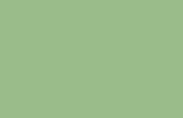

trip to Art Dubai, Sharjah Biennial
or The Armoury Show?
Book ahead!
Save time
and money!



looking for
a creative breakthough?
If you are a visual artist or curator looking for an opportunity to realise your project, we may have the answer to
your creative vision.
For more details
contact us on
info@artbahrain.org


I moved to Antwerp in 2004 to study sculpture at it’s academy. When I graduated I was offered a job in the same academy as a teacher. This job, my atelier, a rich and variegated cultural climate, the intimacy of the city are all reasons for me to stay here.
Besides it is goegraphically very well situated: Brussels, Paris, London, Amsterdan, Düsseldorf are all reachable within a few hours.
What is the best thing about the place?
It is intimate and cosy while keeping at the same time a very cosmopolitan character when it comes to art and culture. It is home to many museums, galleries, theaters, and concert venues as well as to a big variety of restaurants, bars and cafés. All these things are very helpful after a day of hard work at the atelier.
What are your favourite art museums, galleries and places of cultural interest?
Being a sculptor, the Middelheim, is definitely the ideal place. It’s an open air museum, a big park near the town edge, presentig an extended collection of modern and contemporary sculpture. Another area, a small triangular district in the southern part of the city, between the fine art museum and the museum of contemporary art, is where most contemporary art galleries of the city are situated. A nice place to walk around and get confronted with various ideas and statements. Whenever possible, I like to go to a good concert or to see a theater performance in one of the many halls the
city has.
How would you pass a perfect day in Antwerp?
Loving my profession as a sculptor, my perfect day would include many hours in my own atelier. When this is not the case, I would opt for a late breakfast in one of the many coffee houses, while reading the morning paper or browsing some magazines. A few interesting book shops or a walk through the antique stores street would complete the morning. After that a visit to the museums or the art galleries is unavoidable. A stroll along the riverside, before dinner in one of the many restaurants would end this long and warm summer day…
Which are you favourite restaurants?
It depends on what I feel like eating, and on the company I have. The quality of the product is very important for me. Near where I live there is a restaurant which is specialized in fish. Another small place doesn’t have a menu, and the cook decides what to prepare for the evening. Some other restaurants experiment with new tendencies in the art of cooking and combine it succesfully with the regional bourgondic tradition. There are too many good restaurants; to name one in specific wouldn’t do justice to the others.
What is the one thing you’d like to do in Antwerp that you haven’t done?
…I haven’t been to the Zoo yet...
Athar Jaber
When I am not working in my atelier, which is somehow a shelter, I like to go to the Middelheim museum. The fresh air, the nature and the wide spaces are a great diversion from the crowded city. While the sculptures provide enough thinking material. Because of it’s big harbour, the city edges are very industrial. When even art becomes too much, I like to wander between the buildings or constructions of these areas. Somehow the raw structures, their proportions, their static character fascinate me. There is something sublime about them.
What is your favourite view in Antwerp?
Antwerpen has been one of Europe’s most important port since the 16th century. The river Schelde has thus played a central role. To connect the the city to the left side bank, there are a series of tunnels that run under the river. As a result there are no bridges to hinder the view of its course.
From the river banks one can sometimes witness the great skies that flemish paintings so often depict.
What are you currently working on?
I am now working on a marble sculpture, the third in a serie of four. This sculpture, as well as the others, represents a slightly larger than life size male figure. I would describe them as twisted, deformed, tormented, broken bodies. The third is almost finished, and preparations are being done to start the fourth and final one. Usually it takes me a year to make one, but I have to hurry now: they have to be completed by the end of this year, as the whole serie is planned to be exposed in a German museum in 2012.

Opus 4 No. 1c
The arm terminates in a detail-rich hand covered in veins while the thigh, connected to the knee, can also be identified. The hand's index finger is pressed into a further body part, an upper arm, which is revealed when you take one more step around the sculpture. The lower arm is connected at the elbow and the whole piece ends in an extension of the unpolished, raw marble.
ATHAR JABER born in 1982 in Rome and raised in Florence - cannot hide his Italian roots. In 2008 he finished his studies at the academy of arts in Antwerp (where he teaches now) with the presentation of an over-life-sized marble-sculpture of about 600 kilogram weight.
This sculpture is the first in a series of four and it is titled „Opus 4 nr. 1“. Parts of an unclothed male body seem to release twisted and tortured from the in parts raw Carrara-marble.
The heavy, classic material - very detailed and technical excellent worked - contrasts with the in parts anatomical incorrect extremities. The artist ATHAR JABER gives an advice by explaining that Michelangelo and Francis Bacon enthuse and inspire him.
Trained by drawing the famous sculptures of Florence - the hometown of his childhood - he combines in his work the classical and the contemporary. He extends Michelangelo with achievements of the past century and finds new ways to deal with the human body and figurative marble-sculpture, which did not play a major role in the art oft he last decades.

Opus 4 nr 1 a
"Opus 4 No.1" is the first of the four sculptures. This roughly 60 centimetre high and 110 centimetre long sculpture does not have any primary point of view. Instead, as one walks around the work, new and unforeseen views emerge. The only thing that is for certain is that bare, larger-than-life body parts go to make up the piece. Athletic, masculine-looking body parts.

Opus 4 nr 2
The profile of a torso: an upper body bowed forward, the shoulder area, a muscular arm, bent and terminating in a magnificently sculpted hand which the observer cannot see from the same point of view.
Yet, instead of concentrating on this period, misappropriating the developments of the modern era and wanting to continue in the "pre-modern" tradition, ATHAR JABER simply uses these as a starting point. By picking up on and working with current trends and developments, for example with the reference to Francis Bacon, the artist prevents his marble sculpture from appearing reactionary. Instead, ATHAR JABER manages to modernise stone sculpting by drawing on the best of tradition and innovation, making it both appealing and up to date for a contemporary art setting.
Courtesy of Arteversum
- Diary
- 37th Fine Arts Exhibition - BNM
- Al Riwaq Print Workshop
- Al Riwaq Market 338 Opening
- Al Riwaq Graphic Exhibition Opening
- BFH Fine Art Gallery Launch
- Bita Ghezelayagh - Albareh Art Gallery
- Cityphilia - Albareh Art Gallery
- Galleri Hornan - Falun
- Bahraini Collectors Exhibition
- Canvas Education Bahrain
- Ahmed Nawar - The Art Centre
- Artists' Opportunities
- Awards
- Competitions
- Residencies
- ArtGuide
- Art Fairs
- Art Dubai
- Art Paris
- Tokyo Art Fair
- Review - Art Stage Singapore
- Review - Miami Basel
- Biennials
- Galleries/Museums
- Art Fairs









